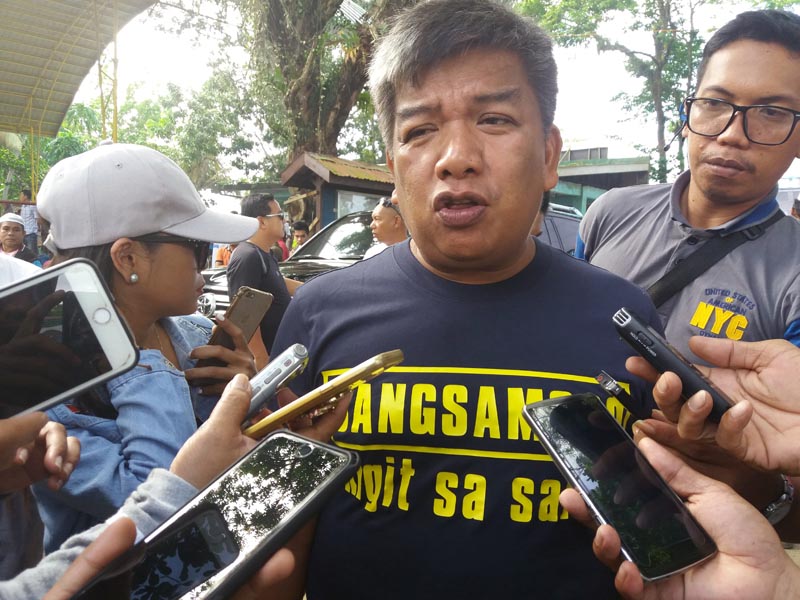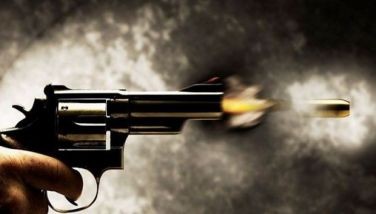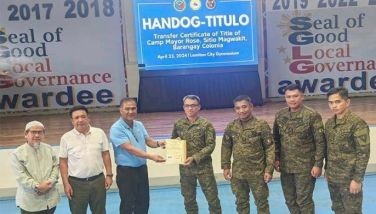ARMM gov: Martial Law killings a 'painful part of our history as Moros'

MANILA, Philippines — The governor of the Autonomous Region in Muslim Mindanao on Sunday night said sanitizing martial law under ousted dictator Ferdinand Marcos will hamper peace efforts in Mindanao, where massacres by government and militia have left lasting scars.
"We must look at our nation’s history, one which includes the Bangsamoro narrative, with eyes that seek the honest truth and minds that seek to learn necessary lessons from this honest truth," Regional Governor Mujiv Hataman said in a press statement.
"We must learn as much from the parts of our history that are painful to remember—our forebears’ failures and their mistakes—as from those stories in our history where we succeeded and were hailed for those successes," he said.
READ: Fact-checking Enrile's tete-a-tete with Bongbong Marcos
Former Sen. Ferdinand "Bongbong" Marcos Jr. and former Senate President Juan Ponce Enrile, in videos of staged conversations released last week, have claimed that there were no massacres nor arrests during martial law, a period now being painted by revisionists and Marcos loyalists as a "golden age" in the Philippines.
"Saying...that there were no massacres during the Martial Law period from 1972 to 1981 is wrong. There were, including the Burning of Jolo and the Palimbang Massacre—both in 1974," Hataman said.
RELATED: The Forgotten War: Memories of Martial Law in Mindanao
Battle of Jolo
The Burning of Jolo, also called the Battle of Jolo between government troops and the Moro National Liberation Front, in February 1974 left Sulu's capital town in ruins.
"It was roughly seven bloody days of destruction, death and displacement at a scale unimaginable. It was because of this war that our family was forced to seek refuge in Tawi-Tawi. As I was growing up, the horrors and agonies of that war was repeated in stories from my grandparents, parents, uncles and aunties, and elders cousins," Noor Saada, a development worker and peace advocate, wrote in a MindaNews opinion piece in 2017.
He noted, however, that there are multiple narratives surrounding the battle. "Between the Armed Forces of the Philippines locked in tight combat with the Moro National Liberation Front were tens of thousands of civilians." he wrote.
Palimbang Massacre
The Palimbang Massacre, also called the Malisbong Massacre, in September of that year was part of a "pacification" campaign where around 300 houses in Palimbang, Sultan Kudarat were burned to the ground.
The men of the village of Malisbong were herded into a mosque and shot and the village's women were raped.
"The rape of women and mass murder of men, and the destruction of property in Malisbong were, without question, sponsored by the state. It was an act of violence against the people of Malisbong under the auspices of then President Ferdinand Marcos," Amir Mawalil of the Young Moro Professionals Network and chief of the Office on Bangsamoro Youth Affairs wrote in 2016.
RELATED: Of national dementia: The Malisbong Massacre, 42 years after
'Historical injustice'
"Stories about these two massacres are part of the Moro narrative, and they are very painful parts of our history as Moros in the Philippines that we must look at to understand how the conflict between the Bangsamoro and the Philippine government's troops grew and lasted nearly five decades. From these stories, we can gain an understanding of what lay beneath the conflict, what problems need solving so we can build a lasting peace," Hataman said Sunday, adding there were massacres even before martial law was declared.
"As Defense secretary, [Enrile] would have known about these massacres—especially the ones where military personnel were involved," he said.
President Rodrigo Duterte, who pushed for passage of the Bangsamoro Organic Law, said it was meant to correct historical injustices to Mindanao's Muslims, which include the loss of their land to Spanish and American colonizers and, later, to waves of migration by settlers from Luzon and the Visayas.
Duterte has also repeatedly brought up the 1906 massacre of Moros in Bud Dajo in Sulu by American forces.
"We Moros have been struggling to recognize our history as a people with a right to determine our own path. Revising our history will only make this struggle more difficult," Hataman said.
"Hiding the truth in sanitized versions of our history will not help us build peace. At this crucial stage where we will begin implementing the Bangsamoro Organic Law, we need the truth, unvarnished and honest, as our guide. We cannot build peace on lies."
The Commission on Elections will hold a plebiscite on Jan, 21, 2019 to ratify the Bangsamoro Organic Law and create a new region to replace the ARMM.
- Latest
- Trending




























